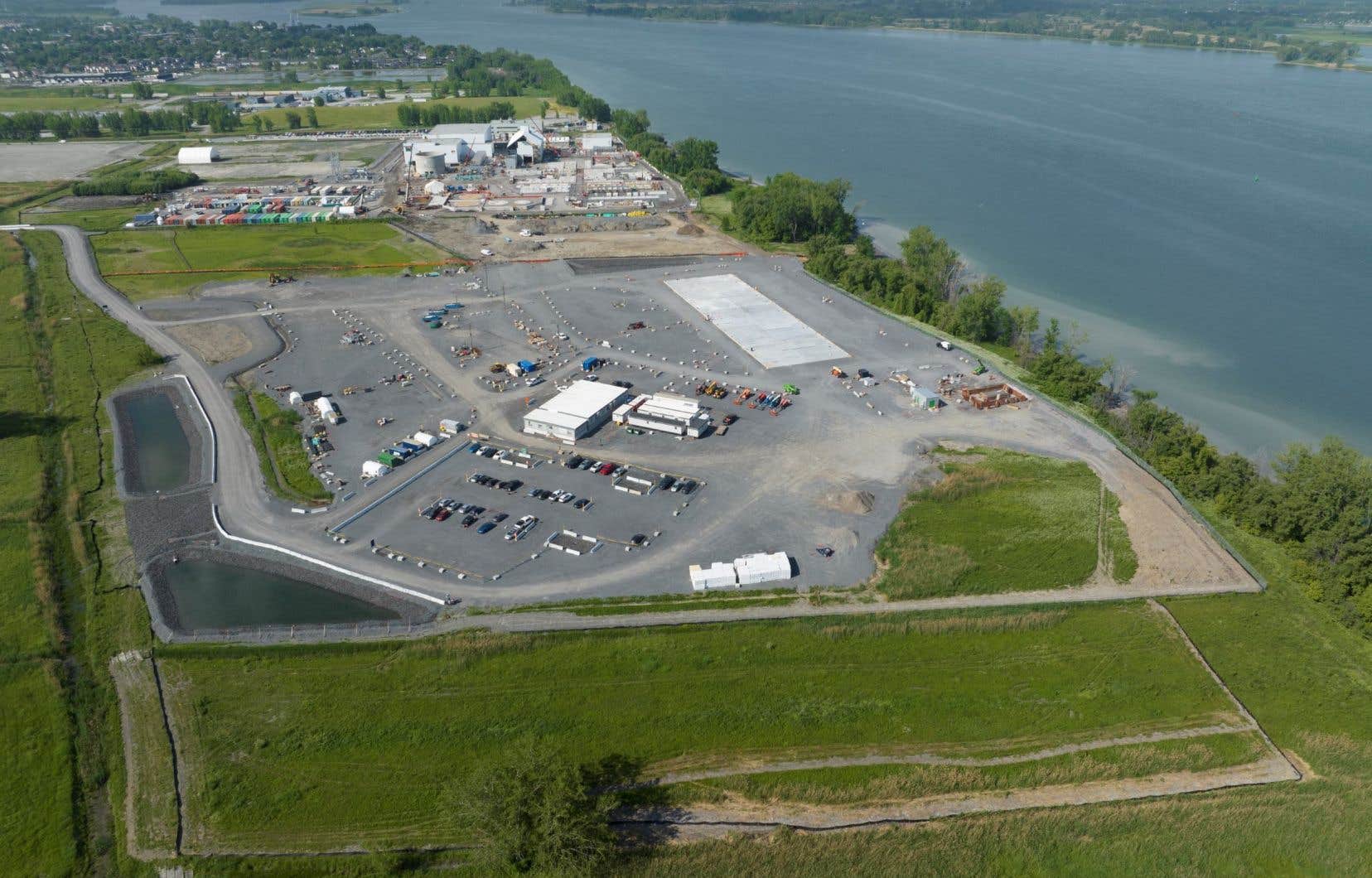The construction of the first biomethanol plant and the largest green hydrogen plant in Quebec is well advanced on the banks of the St. Lawrence River. Silos which will accommodate the raw materials and the buildings which will be at the heart of the activities have started to grow on the former petrochemical refinery park today occupied by Recyclage carbon Varennes (RCV).
The rest of the equipment is currently based on boats from Asia, explained Stéphane Demers, general director of RCV, on the sidelines of a press conference and a site visit.
“They will arrive like big Lego blocks that we put together,” he said. It’s on the way, it will arrive around mid-August. We will have 72 modules transported from Contrecoeur. And at the start of next year, we have eight “super modules” which will arrive in Bécancour. »
Trucking will be heavy on the roads leading to the construction site, which is entering its intensive phase. Around 500 workers will soon be working there. The plant’s entry into service is planned for the end of 2025.
All of this represents an investment of more than $1.3 billion. The shareholding is made up of 76% from the oil and energy companies Shell, Suncor and Proman, as well as 24% from Investissement Québec. The Canada Infrastructure Bank (CIB) for its part lent 277 million for the project.
The biofuel must be produced 50% from residues from the Quebec forestry industry. The other half must come from residual materials from sorting centers. “We recycle what is not recyclable,” explained Dominique Boies, CEO of Enerkem, which provides core biorefinery technology to RCV. Supply agreements have yet to be concluded.
Mr. Demers explains that this biomass will be crushed, then burned in a gasifier, a sort of slow combustion oven. The process provides that the gas thus released will be injected with oxygen, then cleaned, then sent to a reactor and added with hydrogen.
“A chemical reaction takes place, and at the output, we have an unpurified methanol,” explains Mr. Demers. Methanol is compressed so that it can be used in liquid form.
“Green” hydrogen will be produced using an electrolyser, which passes current through water to break down the molecules and capture the hydrogen. It will produce 40 tonnes of hydrogen per day, which RCV intends to use in full, at least for the moment, to produce 125 million liters of biomethanol annually.
Reducing the maritime transport footprint
This amount of fuel could power five medium-sized ships for a year, according to MM. Boies and Demers. “It’s a small drop,” admits Stéphane Demers. But on the other hand, it is a rare commodity on the market. »
The maritime industry is increasingly favoring methanol as an alternative option to fossil fuels, says Dominique Boies. However, the carbon footprint of biomethanol – as opposed to methanol synthesized from natural gas or coal – is much lower, he adds.
The possibilities for using biomethanol are multiple, says Mr. Boies, particularly in manufacturing industries and transport. In a report published in 2021, the International Renewable Energy Agency highlighted that the cost of producing sustainable methanol was high and that production volumes were low. However, the agency considered that demand would quintuple and that its prices could become competitive by 2050.
At a press conference, Saad Rahali, senior director of infrastructure at the BIC, affirmed that the prices of this fuel were likely to fluctuate in the coming years, but that this risk-taking was necessary for the country to become a “pioneer of green economy”.
